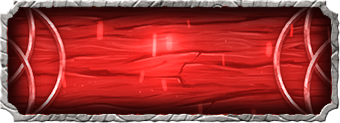
Faction Overview
The Chosen Grove plays like a growing tree, sprouting units around it until it’s mature enough to march forward and win. This is an attrition based faction focused on hand management, with two major phases: first, spawning units to protect the summoner, and then transitioning into a push once it can unroot.
Faction Strategy
The summoner has a massive health pool, and much of the game revolves around how to exploit that, despite being immobile. The overall goal is clear from the start: unleash that pool of health by depleting your deck. And no discussion of the deck would be complete without mentioning its most important champion: the Knight of Seasons. While the final moment belongs to the summoner, the Knight of Seasons marks the first major breakpoint for the faction.
Because of this, the Chosen Grove must manage its hand aggressively to reach both moments, the emergence of the Knight and the Unroot of Eldiri Nimid, as early as possible.
Until then, the deck has tools to keep Eldiri Nimid relevant by pushing units into its range or by supporting ranged units hiding behind it.
In short: burn your hand aggressively to build magic, defend while poking at the opponent, get Knight of Seasons into play as early as possible, and follow up soon after with Eldiri Nimid. These two cards together should ideally take over the game. The rest of your plays should be preparing the ground for this pair.
Card-Specific Strategies
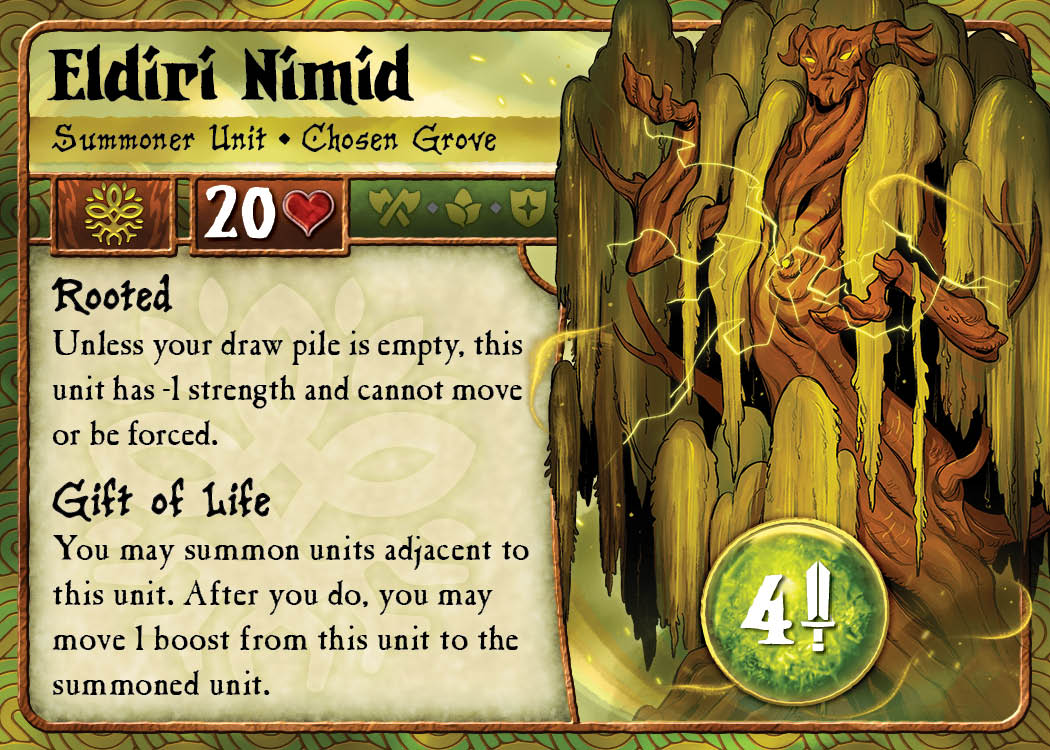
This is the largest summoner in the game, and it starts up front, but it can’t move. While it’s tempting to be reckless with so much health, that’s not the right path. The idea is that, by the time it moves, it should have enough HP remaining to fully exploit its 4 Strength. Still, it’s okay to take damage early on if it means using that Strength, especially if it means fully using the unroot event.
Its ability to summon adjacent units may suggest that gates are less important for this faction, and that is true to an extent, butg ates are vital, not only as shields but to extend Eldiri’s summoning range. One of the key early decisions is whether or not to place a gate in front of Eldiri, which can sometimes become a hindrance. Should you instead use Unroot to reposition Eldiri in the same column as the opponent’s gate? Maybe even push it forward?
These decisions are matchup and context dependent, there are no easy universal answers.
Finally, Eldiri’s ability to boost adjacent summoning units is straightforward and it’s one of your main tools for empowering your board.
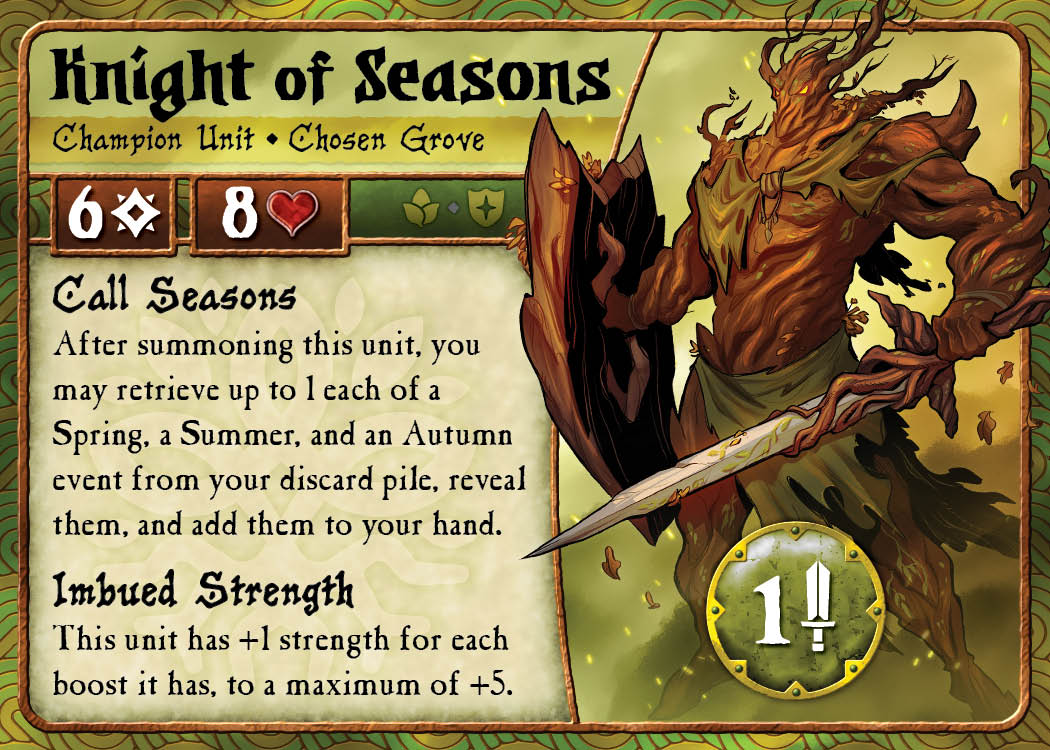
Normally, I wouldn’t start with a champion, but this one is an exception, it’s absolutely central to how the faction works.
Knight of Seasons isn’t optional; it’s your biggest weapon. Its cost to stats ratio, once boosted, is unmatched. Gaining the necessary magic is relatively easy, as you can discard events and immediately retrieve them.
This unit is another reason to consider a front gate: it allows Knight of Seasons to pressure the opponent right away. But you need to ensure that it enters play with at least 3 boosts, which is harder if Eldiri isn’t nearby to provide the first one. Also, ensure you have the right events in your discard to retrieve. You’ll use those same events to protect it, healing it and repositioning it after an attack.

This is your core common, and it’s clear why: it’s built to protect your key units. In a summoner, and champion centric deck, that’s invaluable. Its Protect ability is already strong, but it also comes with one of the best abilities in the game: Shove. This helps both in defending your board and in pushing enemy units into your summoner’s range.
You’ll typically want one or two of these on the board at all times to make it harder for the opponent to reach your champions or summoner and to have some board control. Don’t hesitate to deploy them aggressively to accelerate your hand management, you’ll always find a use for them.
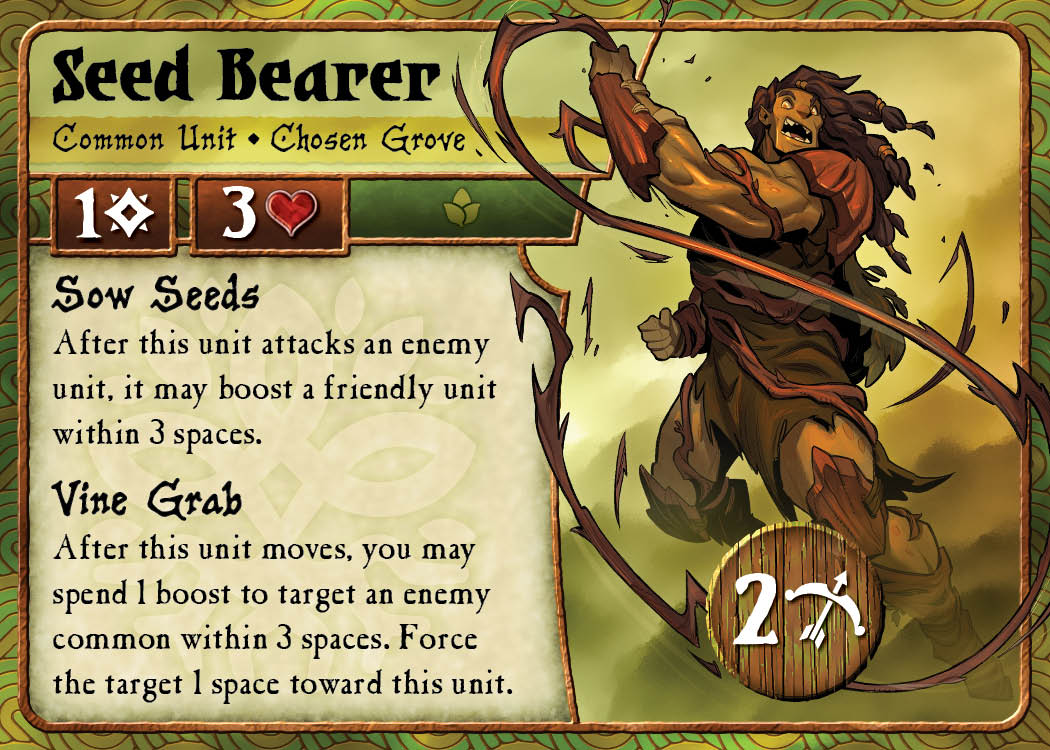
This is a key early, game support unit. It keeps your summoner relevant by threatening to move enemies adjacent to it and by generating boosts. While the Chosen Grove doesn’t rely on boosts as heavily as other Earth factions, it still needs some, and this is your only unit based boost generator (all others come from events).
So early on, you want at least one active Seed Bearer to help with control and boost generation. Later in the game, you can start discarding them more freely. I generally try to always keep one ready and boosted.
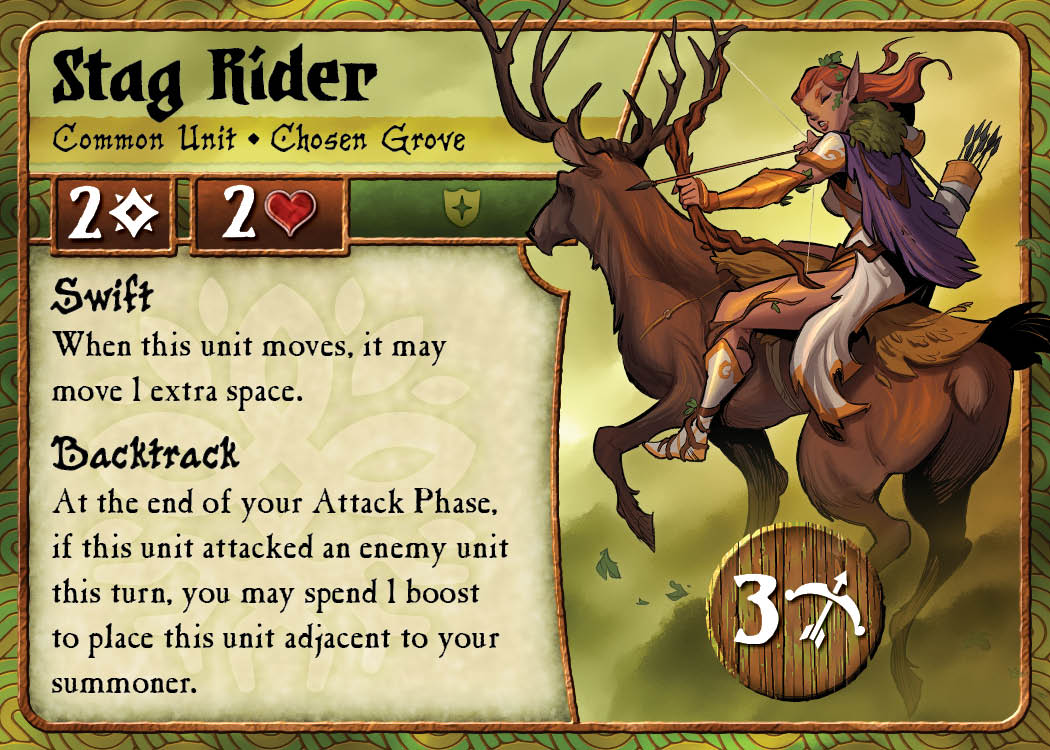
Your ranged unit, specialized for hit and run tactics. It’s usually not helpful in matches where the opponent rushes you, but you always want at least one if they’re playing a keep away strategy. One is often enough, as it should be kept safe and hidden, ideally in the one safe spot available. But don’t be afraid to cast more copies in range intensive match.
When used well, it provides crucial reach for a faction that otherwise lacks it. However, given its cost, don’t summon one unless you have a solid plan to protect it.
In general, this is the first common you’ll consider discarding for magic.
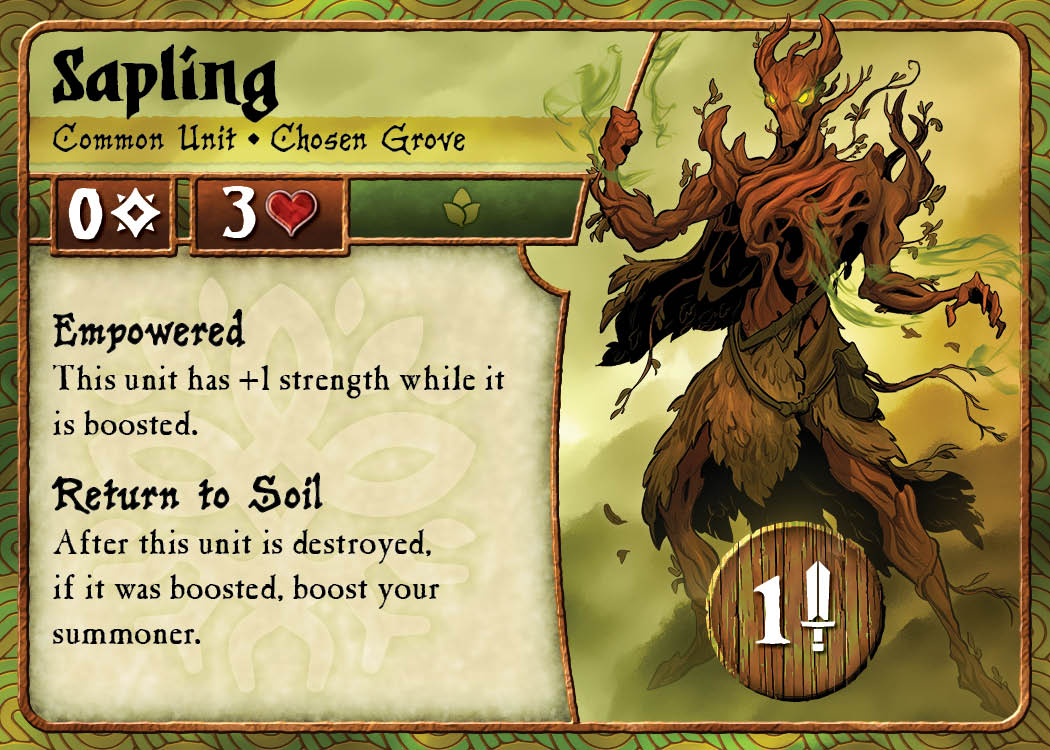
Not essential, but extremely efficient. Saplings are cheap and awkward to trade against. They won’t win games, but they’ll never lose them either. Use them for damage, zoning, or plugging gaps in your formation. Play them if you can, but don’t hesitate to discard them for more critical units.
They also interact well with Bloom of Spring, if you’re planning to play it, bringing out a few Saplings to receive the boost can be very efficient.
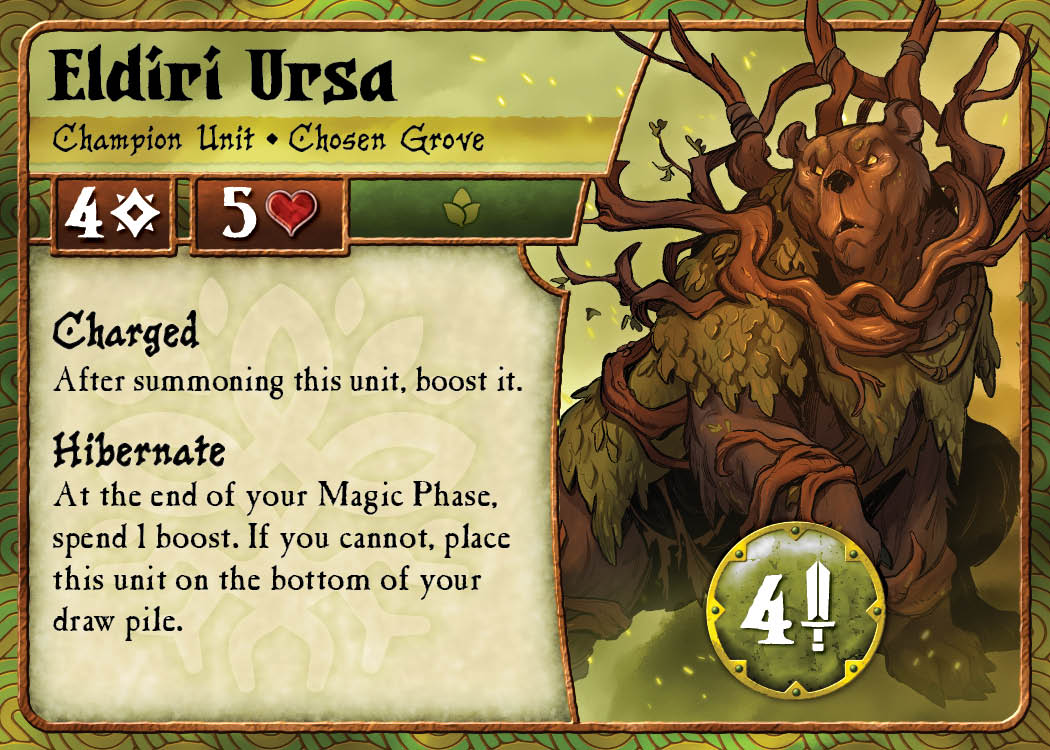
Another crucial champion. While not as mandatory as Knight of Seasons, if Ursa doesn’t show up in your opening hand, you should try to play it as it’s a good source of damage.
Ursa is tricky to use. If drawn midgame, it lets you burn cards aggressively, knowing you can spend your magic on multiple Ursa summons.
Its main value is attacking and then hibernating back into your deck. But timing this is not easy. Ideally, you want it to absorb damage before it hibernates, but surviving is easier said than done. Smart positioning, Guards, and Shroud of Autumn help make it work.
Ursa takes thought, but offers massive value if played correctly.
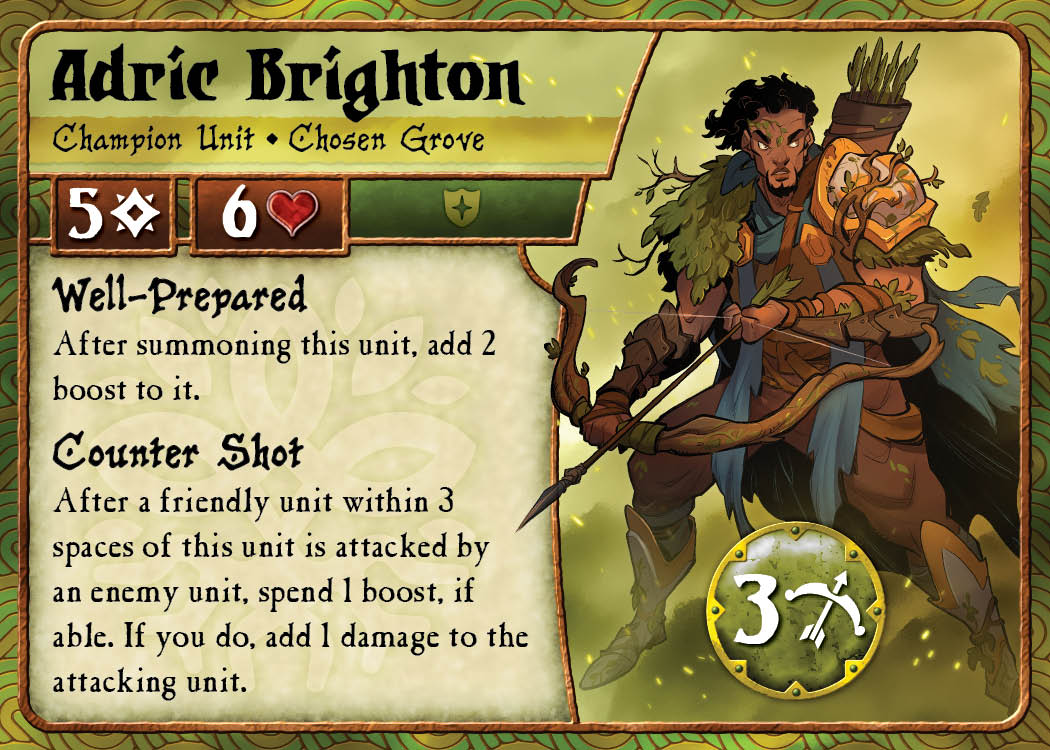
Not essential, but worth summoning. This deck supports champions very well, and Adric benefits from that support.
If you draw him early, you can discard him without much regret. But if not, he’s worth playing to keep up your aggressive magic tempo. More useful in slower matchups or when ranged units are key. The core value comes if you can keep it hidden getting boosts adding damage for free to your opponent units.
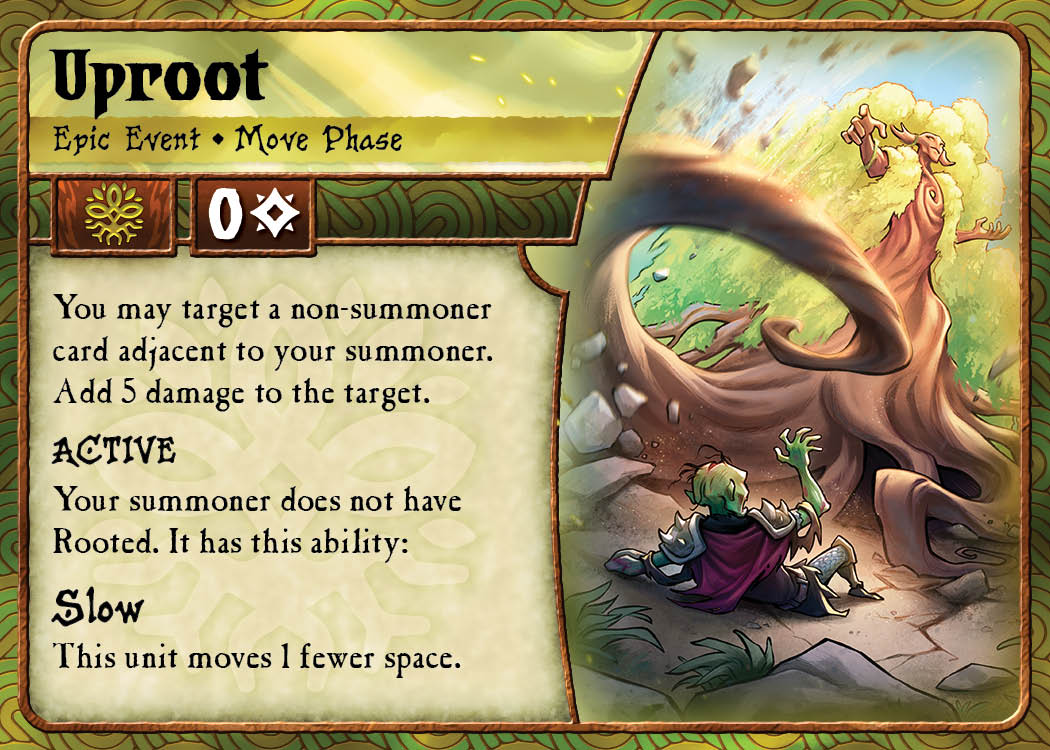
The epic event is one you should try hard to play both copies every game. 5 direct damage, movement for the summoner, and +1 Strength for a turn. Huge value if you can use it properly.
The catch? Nimid must be adjacent to deal the 5 damage, which isn’t easy. The most reliable combo is with Seed Bearer: move an enemy next to Nimid during the movement phase, then Unroot, then reposition Nimidi.
That said, don’t be afraid to use it early just to reposition Nimid, its placement can determine the game’s flow.
In the late game, Unroot becomes terrifying. Eldiri can move adjacent, deal 5 damage, then attack, 9 total damage. Even champions can be one shotted.
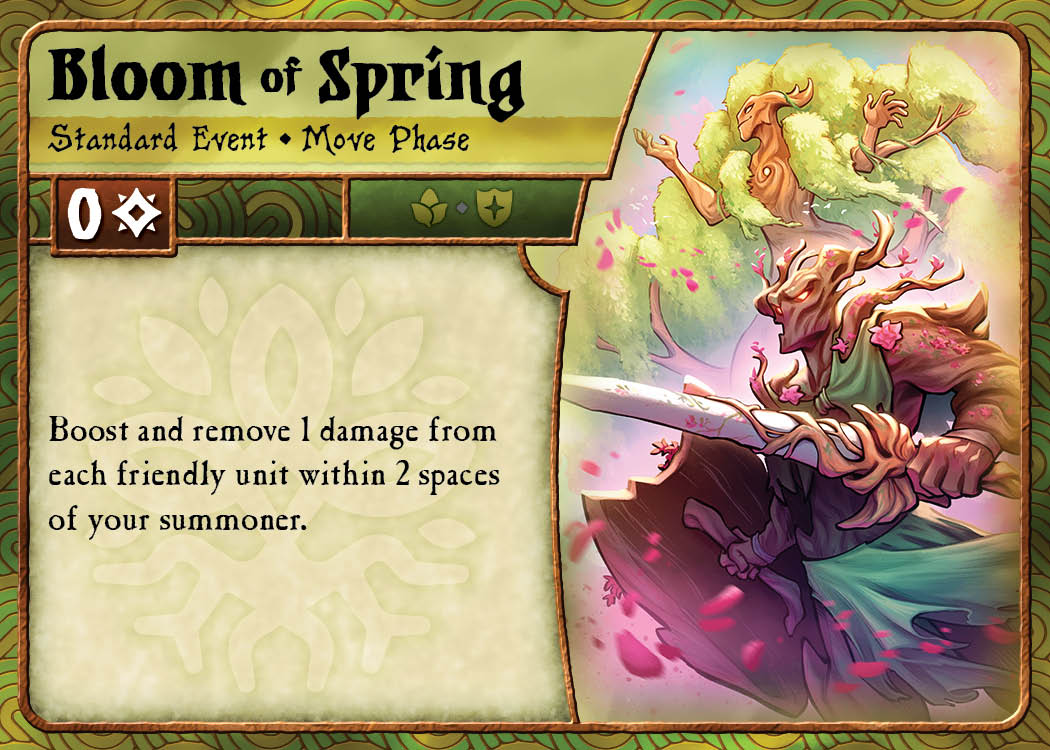
This event justifies deploying lots of units, even ones that aren't essential at the moment. It boosts multiple Seed Bearers, Saplings, and even Stag Raiders. The healing, though small, can be the difference between life and death in Summoner Wars. When combined with the boosts, this event easily pays for itself.
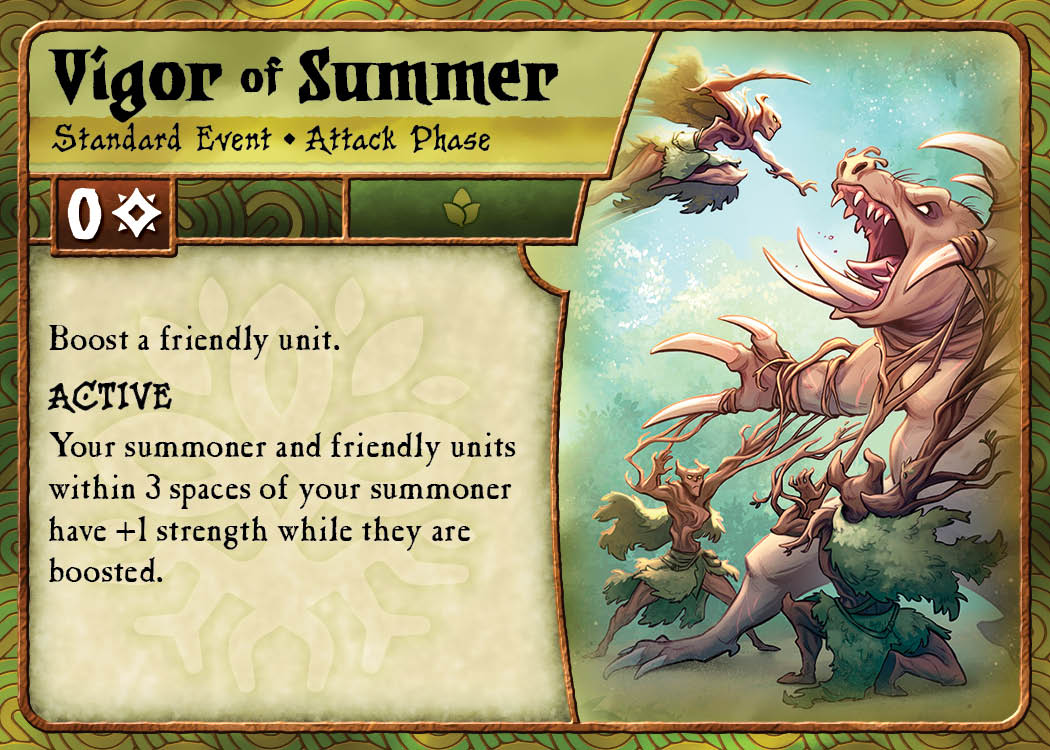
A simple event: one boost and +1 Strength to 3 units. Your commons typically deal 2 damage, but 3 is a key breakpoint in Summoner Wars. If this card helps you hit that breakpoint in two key attacks, use it. Otherwise, feel free to discard it, it’s not worth clogging your hand.
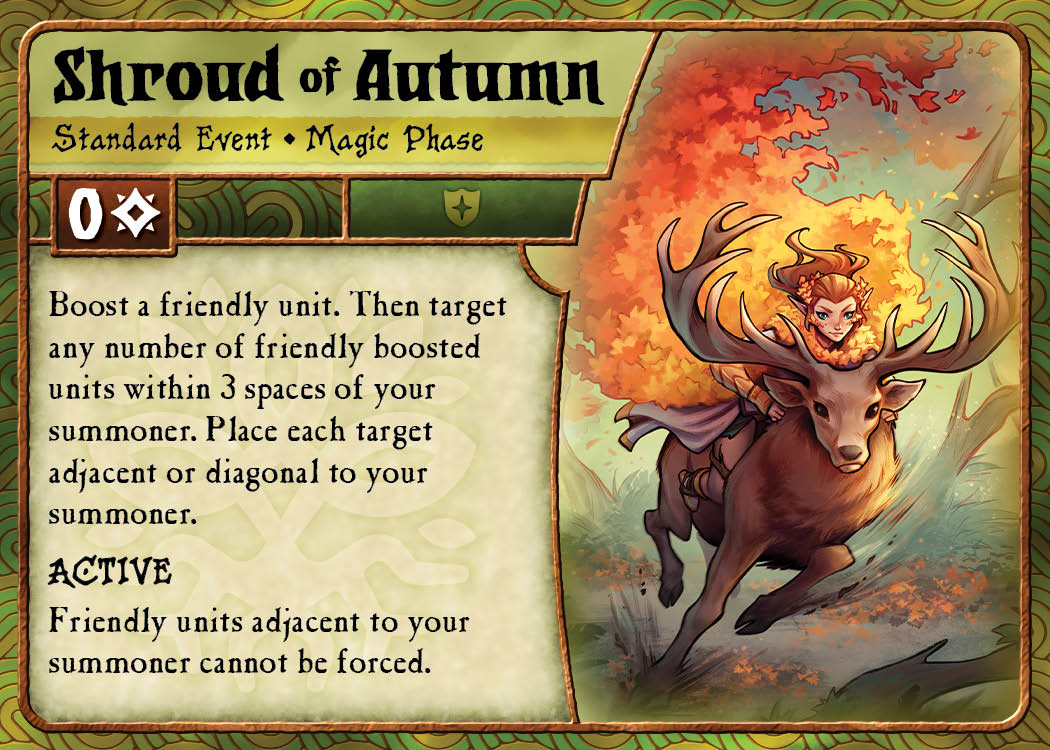
This event has two major uses. First, it enables hit and run plays, especially with champions. Send Knight of Seasons or Ursa on a wild charge, then pull them back to safety. Always valuable.
Second, it helps stabilize against rushes. One weakness of the deck is that if the opponent places a unit in front of Nimid, they can keep sending wave after wave into that same spot.
While Nimid’s high health and your Guards make this strategy difficult, some assassination, focused decks may attempt it. Autumn helps you retake the flanks and secure Nimid's position.
Conclusion
The Chosen Grove starts weak but grows in power as the game goes, and the faster you discard and deploy, the faster that happens, but discarding too aggressively can be hard without destroying the deck
When discarding, prioritize keeping and playing:
Knight of Seasons, always.
At least one Seed Bearer for boosts and control.
Several Oaksworn Guards to soak health.
Everything else is flexible and can be discarded depending on matchup and flow.
Although The Chosen Grove may starts defensive, the faction's success depends on becoming proactive and shifting into aggression. Don’t hesitate to discard units if they’re not helping you reach the Knight or Unroot timing. Once those two threats are online, the tree is ready to conquer.




